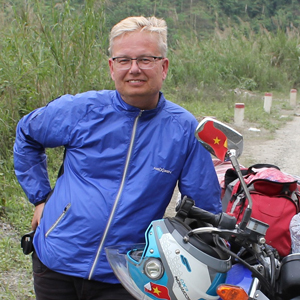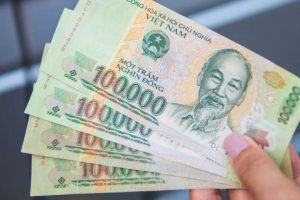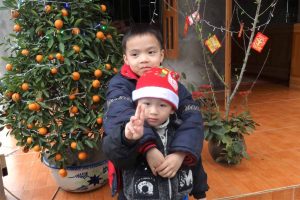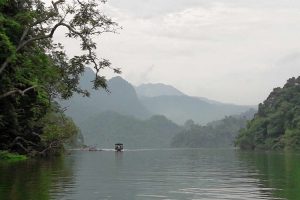If you can enjoy some blossoming in northern Vietnam, no doubt it’ll make your landscapes more precious. Because besides stunning mountains, dwindling roads and friendly people with hospitality in their spines, it’s the greenness that will daze you when visiting this region. The forested limestone and granite mountains of Ha Giang and Cao Bang will encapsulate every view on the road. Dense forest with large vines, wild banana trees and bamboo creates much of the green backdrop when discovering this area.
In and around the village plantation, many fruit trees line the roads and farms. Climbing rice fields and corn planted in between the rocks as far as your eyes can reach on the mountain side add further green characteristics to the landscape.
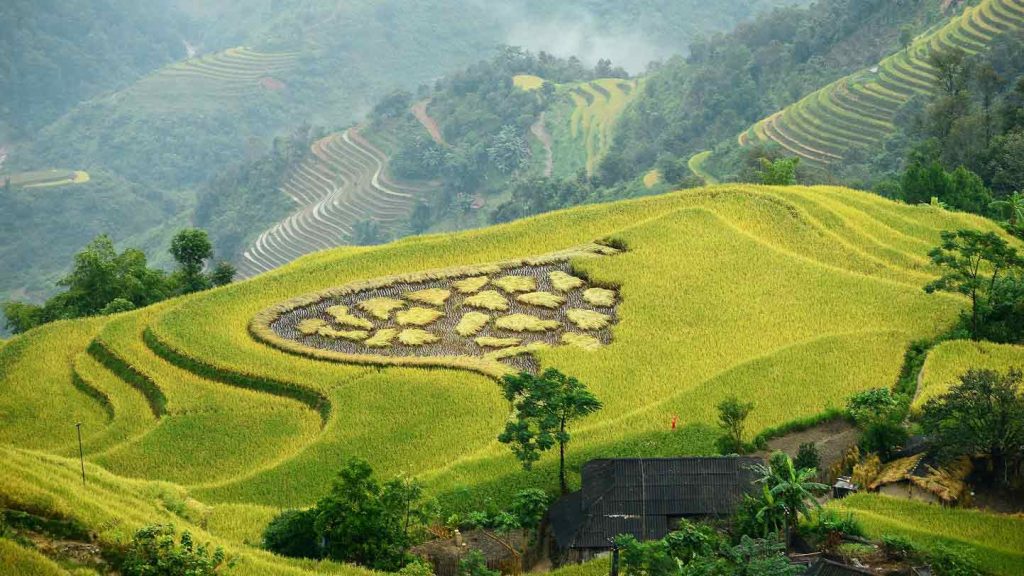
At springtime, the greenness is at its most spectacular due to the blossoming in northern Vietnam. New sprouts from the trees, they young bamboo shoots and the newly planted rice truly give a scenery of 50 shades of green. That said, green it is year around. This all also comes with the blossoming of many trees and vegetations. And who doesn’t love flowers? Vietnamese people and culture do endow flowers a lot of adoration, mysticism and herbal powers.
“Flowers are the sweetest things God ever made and forgot to put a soul into”
Henry Ward Beecher
So, let’s have a look at what and when to expect certain blossoming in northern Vietnam.
January & February: Peach Blossom in Vietnamese New Year
“Tet Nguyen Dan”, or simply “Tet”, is the most important holiday in Vietnam. It’s the Vietnamese New Year and it denotes the arrival of spring based on the Lunar calendar. Depending on this Lunar calendar, it falls around late January or early February. The celebration lasts for at least five days, and it’s a time when family reunites around the country.
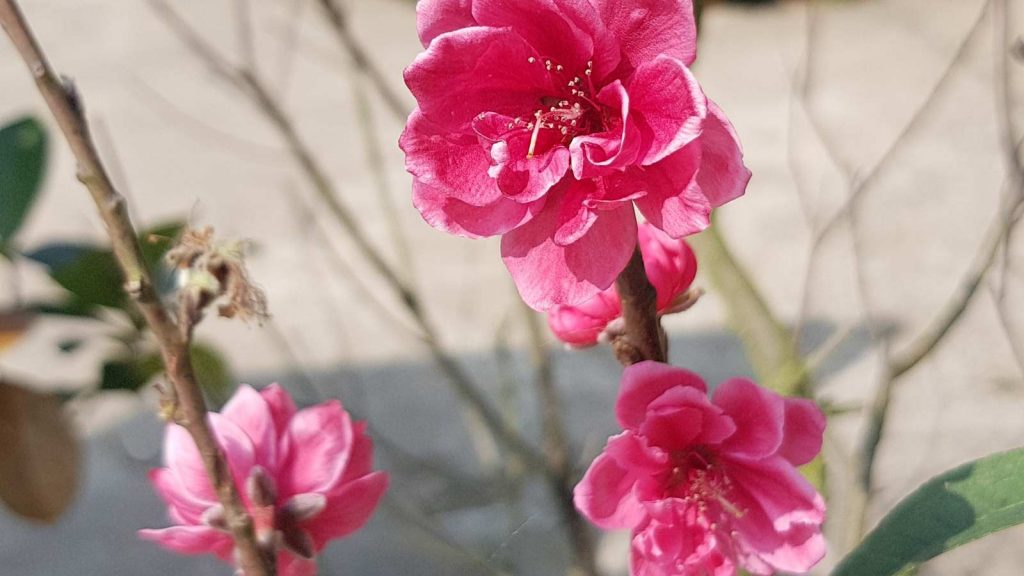
In Vietnam, there’s a strong belief that the colors red and yellow bring good fortune. Not surprisingly then that it’s flowers in these shades that are celebrated and decorated in every home. In northern Vietnam, it’s the light read peach blossom that brings luck for the New Year. Days before the holiday, expect to see every market and street corner with people selling branches or renting full seized trees for homes to ensure a lucky New Year.
In central and southern Vietnam, it’s the yellow apricot blossom that takes on the same symbolic meaning and decorative tradition.
The month following Tet is also the time when all varieties of fruit trees spring into color and give extra fragrance to your nose and eyes.
March: The Blossoming of Red Silk Cotton Trees – Signal of Coming Summer
By early March, you’ll take note of majestic barren trees with massive red blooms along the road and up the mountains. This is likely to be the Red Silk Cotton trees, also named “Kapok tree”. The red flowers with 5 petals appear before the new leaf foliage grows.
These red blooms are said to signal to local farmers to plant different crops and put away the warm winter blankets.
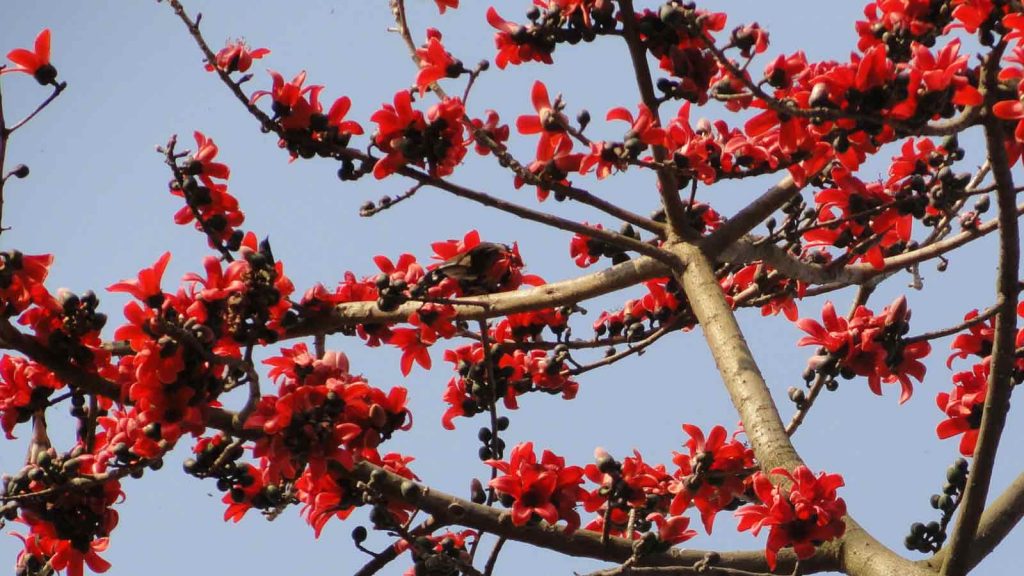
Around the villages, you may come across children using the fallen flowers as hair decorations. Locals also pick, dry and use these flowers as herbal tea. While you may also see young couples making romantic photos and selfies, these trees are also contradictory believed to be favored by ghosts…
These trees are some of the largest on the mountain, reaching up to 40 meters in height. Although its stout trunk suggests that it could be used for timber, its wood is however too soft to be very useful. Nevertheless, roots, bark and flowers are components of many traditional medicines.
November: The Buckwheat Flowering – A Mountain Farmer’s Second Best
Rice is obviously the staple food in Vietnam. People eat it for breakfast, lunch and dinner in all rural homes. The banana pancakes and omelets they might serve at homestays are not really the local farmers’ preference. In many lower lying regions of Vietnam, there can be up to three crop seasons of rice plantation. However, up the mountains, rice might not even be a viable crop to grow. In the most northern mountains of Ha Giang and Cao Bang, corn is the common crop, and it’s only grown in one season per year. This factor is one greatly contributing to the relative poverty in this region.
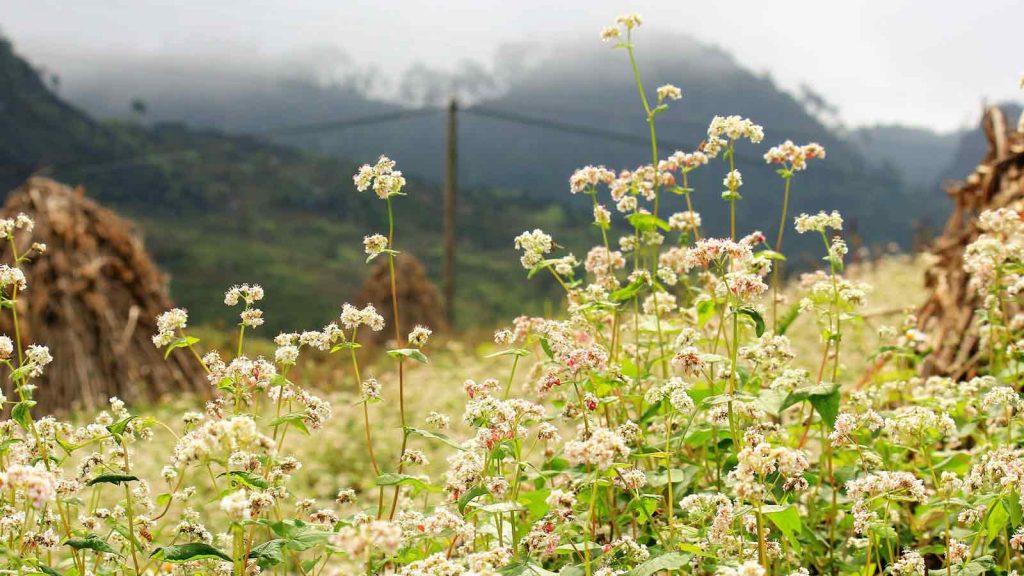
Supplementing the corn, in the colder months locals will grow various vegetables and buckwheat.
Buckwheat produces grain-like seeds. People use its flour to make noodles, bread and cakes, and they believe it has medical benefits. Therefore, you’ll find buckwheat in traditional medicines here.
Local authorities in Dong Van, the most northern town of Vietnam, have realized the potential of the buckwheat blossoming. Now, they hold a yearly tourist festival to honor the beauty of the fields. This festival normally takes place in the month of November, and besides buckwheat and its products, many art performances, crafts and cuisines will be on display.
The buckwheat produces small white, purple or pink flowers which can by themselves be used in tea. And you can observe fields of buckwheat flowering as early as late October and even into January. However, the peak is November. And it attracts a lot of domestic tourists to the province. You’ll actually find some fields solely planted for tourism. Entrance fees, buckwheat flowered love swings, special festive custom decorated children and females available for making your special selfie. You may join the spectacle directly or at a distance. Along the loop, you’ll still come across ‘natural’ buckwheat fields for your photos. But please do so without trample these fragile but beautiful living things!
Want to learn more about northern Vietnam? Read tons of tips on destinations, activities, food, people, culture, weather and more in our Happy Road Blog.
